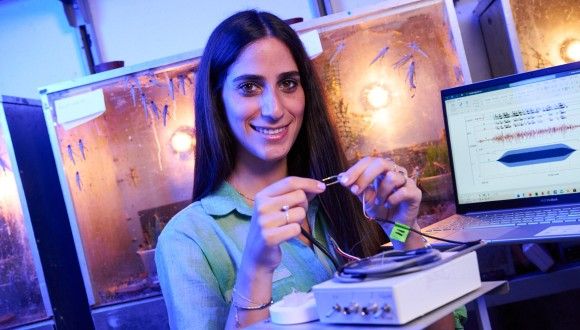Robot Hears through Locust Ear
In a world first, an organic ear has been connected to a robot, which can receive electrical signals, “hear,” and respond accordingly.
To achieve this breakthrough, a team of TAU researchers used a special device called Ear-on-a-Chip, developed at the lab of Dr. Ben Maoz of the Fleischman Faculty of Engineering and Sagol School of Neuroscience. The device kept the ear—taken from a locust—alive by supplying it with oxygen and nutrients, while allowing the electrical signals to be taken out of the ear and then amplified and transmitted to the robot.
Based on the project’s success, the team plans to use this integrative model in other applications. Maoz notes that biological systems are more sensitive and less expensive than their technological equivalents—and also consume less energy—thus making the hybrid system a winning option.
“Nature is more advanced than we are,” says Maoz, a Blavatnik Faculty Recruit. “The principle we have demonstrated can be applied to other senses. For example, some animals have amazing abilities to detect explosives or drugs. The creation of a robot with a biological nose could help us save human lives and identify criminals. The sky is the limit.”
The study was led by Idan Fishel, an MSc graduate, under the supervision of Maoz and Profs. Yossi Yovel and Amir Ayali of the School of Zoology and Sagol School of Neuroscience. The results were published in the prestigious journal Sensors.






